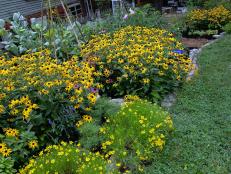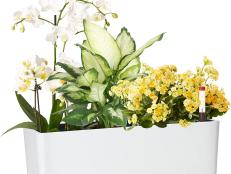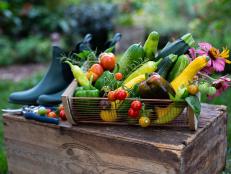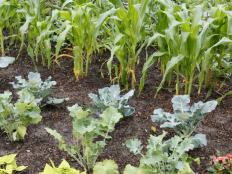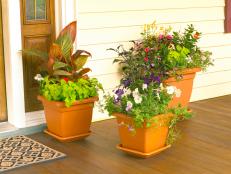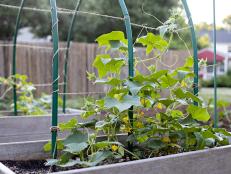Grow a Rooftop Garden
Find out best practices and the edibles that thrive in a rooftop garden.


Image courtesy of Storey Publishing Illustration by Mary Ellen Carsley
Harbor a desire to grow a garden of Asian vegetables? Edibles on a patio? A formal kitchen garden? Garden writer Niki Jabbour has assembled an intriguing mix of garden types to meet the needs of many types of gardeners, whether they are in it for the canning, a beautiful mix of edibles and ornamentals or have limited space to work with. Groundbreaking Food Gardens: 73 Plans That Will Change the Way You Grow Your Garden gives readers the tips and tools they need to make it happen.
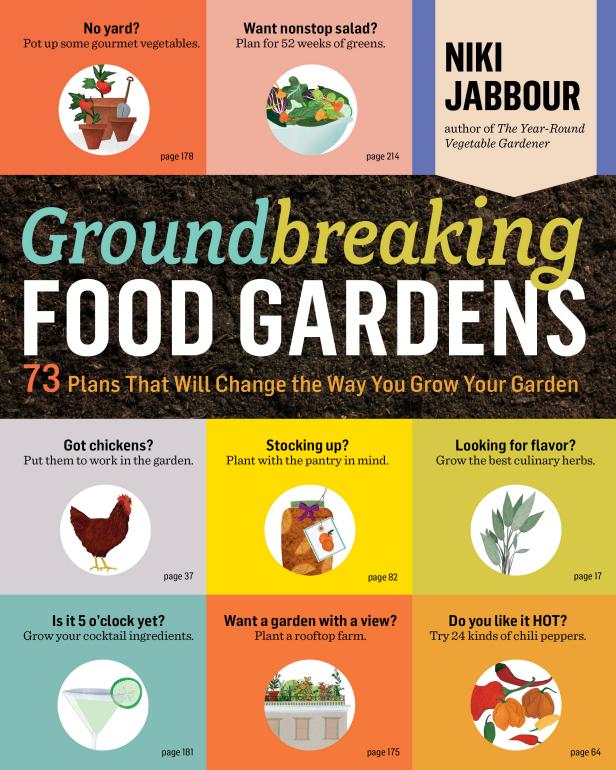
Image courtesy of Storey Publishing
One of the more tantalizing garden projects for city dwellers with limited space is the rooftop garden, an opportunity to turn often under-utilized real estate into a lush and productive gardening zone. But there's more! A rooftop gardens says Jabbour, "is also a wonderful spot for al fresco meals, particularly when enjoyed in the evening under a canopy of stars." She advises that those considering a rooftop garden also think about aesthetics, and how to maximize their space. "When laying out the beds and containers, leave space for a small table and chairs. Large pots of dwarf fruit trees or trellised crops can be arranged around the nook to offer privacy from nearby buildings and for creating an oasis in the middle of the city."
Interested in creating your own urban garden in the sky? Follow the example of Seattle urban pioneers Colin McCrate and Hilary Dahl, who share their garden plan in the illustration above and offer their list of edibles that work best on rooftops.
Guide to Edible Plantings:
- Assorted greens: ‘Deer Tongue’, ‘Nancy’, ‘Winter Density’, and ‘Breen’ lettuce; ‘Surrey’ and ‘Roquette’ arugula; ‘Calypso’ and ‘Santo’ cilantro
- Beets: ‘Napoli’, ‘Scarlet Nantes’, and ‘Purple Haze’ carrots; ‘Early Wonder’, ‘Chioggia’, and ‘Touchstone Gold’
- Onions: ‘Red Rezan’, ‘Polish White’, and ‘French Pink’ garlic; ‘Ailsa Craig’, ‘Prince’, and ‘Ruby Ring’
- Perennial herbs: Italian oregano, ‘Aureum’ golden oregano, Greek oregano, common (English) or ‘French’ thyme, peppermint, and rosemary
- Kale, broccoli, and Swiss chard: ‘Toscano’, ‘Rainbow Lacinato’, and ‘White Russian’ kale; ‘Bay Meadows’ and ‘Arcadia’ broccoli; ‘Bright Lights’ Swiss chard
- Strawberries: ‘Seascape’
- Hot peppers: ‘Thai Hot’, ‘Early Jalapeño’, ‘Ancho’, and ‘Fish’
- Dwarf fruit trees: ‘North Pole’ and ‘Golden Sentinel’ columnar apples (need two different apple cultivars with corresponding blooming times to ensure pollination)
- Annual flowers: Good choices to support the bee population include calendulas and nasturtiums (edible flowers), anise hyssop (edible leaves), and sweet alyssum and lobelia (non-edible ornamentals)
- Squash: ‘Zephyr’ and ‘Gentry’ summer squash; ‘Jackpot’ zucchini
- Potatoes: ‘Yukon Gold’, ‘All Blue’, and ‘Colorado Rose’
- Tomatoes: ‘Black Prince’, ‘Pineapple’, ‘Sungold’, ‘Black Cherry’, ‘San Marzano’, and ‘Brandywine’ (trellised)
- Hops: ‘Cascade’, ‘Centennial’, or ‘Willamette’
- Cucumbers: ‘Marketmore 76’, ‘Suyo Long’, and ‘Lemon’ (trellised)
- Pole beans: ‘Fortex’ (trellised)
Ready to get started? Niki Jabbour offers these tips for plotting out your city garden.
Tips for Starting a Rooftop Garden:
- Start with a plan. Before you head to the garden center, consider whether you wish to install raised beds or would rather garden in containers, and approximately how many of each you'd like to have.
- Consult with the building engineer. it's a good idea to consult with the building manager or engineer to ensure that the roof can support the weight of your garden.
- Check into access. You'll need easy access to the roof to transport materials, tools, soil and plants up and down.
- Use sturdy materials. For containers, opt for larger sized pots, such as half-barrel planters, that will be less likely to dry out or blow around in windy conditions. If installing raised beds, aim to make the beds at least 10-inches deep, to ensure adequate soil for root growth.
- Find a water source. Rooftop beds and containers will dry out quickly and may need to be watered daily during the hottest parts of summer. If desired, an automatic watering system can be set up to reduce time spent watering.
- Look for storage space. It's no fun lugging tools, fertilizers and soil up to the roof every time you want to garden. A small storage space—even if it's just a simple wooden box—will keep supplies handy and prevent them from blowing around on a windy rooftop.
- Pick the right planting medium. In rooftop containers and raised beds, potting soil is your best friend. Not only does it hold water better than garden soil, but it's also lightweight and won't compact over time.






